Gateway to Heaven! Vaikuntha!
Vaikuntha, also called Vishnuloka is the abode of Vishnu, the supreme deity in the Vaishnava tradition of Hinduism, and his consort, Lakshmi, the supreme goddess.
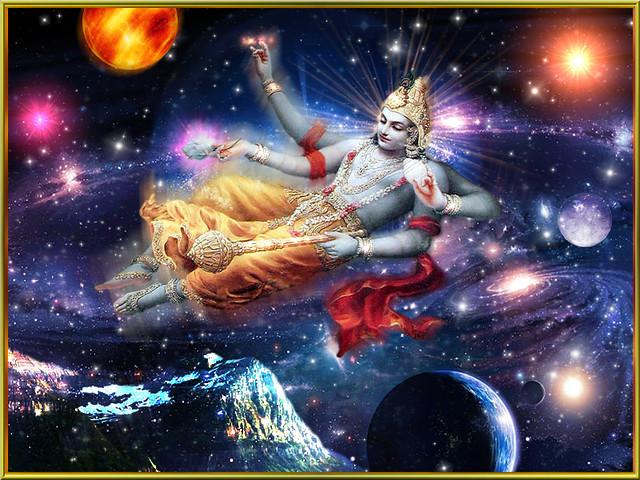
In Vaishnava literature, Vaikuntha is described as the highest realm above the fourteen lokas (worlds), where the devotees of Vishnu go upon achieving liberation.
It is guarded by the twin deities, Jaya and Vijaya, the Dvarapalakas or gatekeepers of Vaikuntha.
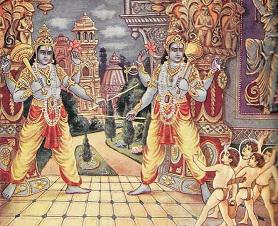
The Hindu faith is centered around reincarnation; the belief that when someone dies, the soul is reborn as a different form. Hindus also celebrate the onward journey of the soul to the next incarnation which they see as a step closer to heaven. Only the evolved souls, The Brahman and the elements of their body-mind complex return to their original source.
For most Hindus, Moksha is the ultimate goal. Moksha frees the soul from the struggles and pain of the material world and liberates the soul from the endless cycle of life, death, and rebirth.
However, one of the most widespread misconceptions is that Swarga & Vaikuṇṭha are one and the same and Swarga is the desired realm of the afterlife as per Vedic scriptures.
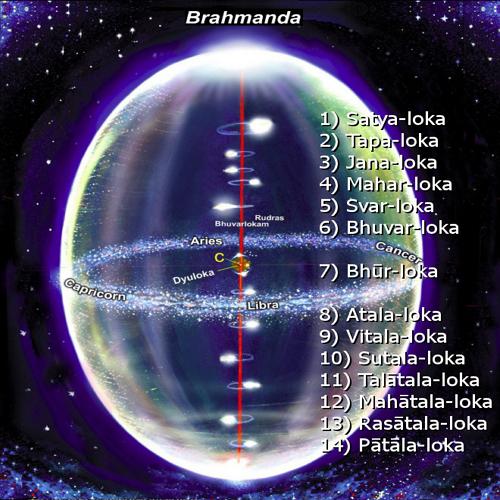
But the Swarga is a place within the realm of time & its residents are mortal. The only difference between Swargaloka & Bhūloka (Earthly realm) is that the duration of life is very long in Svarga & the residents lead a luxurious afterlife.
Swarga is a set of celestial worlds located on and above Mount Meru, where those who had led righteous lives by adhering to the scriptures reside before their next birth on earth. Swarga itself is relegated to the status of a lower heaven, one that is spiritually as well as physically beneath Vaikuntha.
The ancient sages state that Vaikuntha — the unobstructed and unhindered Supreme State is inconceivable, being beyond time and space and without causation.
All materialistic descriptions of it using human values and concepts are vain and worthless.
pradhāna-puruṣāvyakta-kālānāṁ paramam hi yat | paśyanti sūrayaḥ śuddham tad viṣṇoḥ paramam padam ||
What is beyond matter, spirit, manifestation, and time; that pure [state] which sages behold that is the supreme abode of Vishnu.
(Vishnu Purana 1.2.16)
The Rig Veda mentions Vishnu pada/Vishnu's feet in the following stanza:
tad viṣṇoḥ paramaṁ padaṁ sadā paśyanti sūrayaḥ
Meaning:
The gods are always looking towards the Supreme feet of Vishnu.
Margashira or Margazhi is the month in which Bhakti resonates in the air, with devotees coming out onto the streets in groups singing bhajans, sankirtan, charity.
In Odisha, Goddess Lakshmi, the consort of Vishnu is worshipped on Thursday with a special puja 'mana basa Gurubar'.
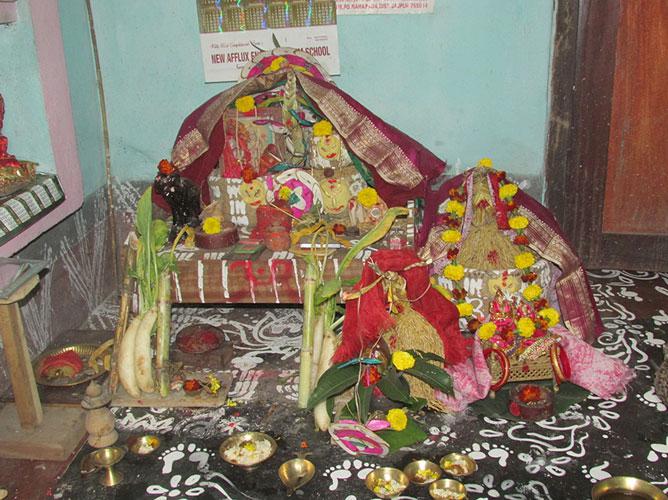
Margazhi is the month that is dear to Lord Krishna Himself. “I am Margazhi among months,” he says and all those who think of Him and pray to Him, will be assured of Krishna’s grace. In the Bhagavad Gita, Lord Krishna describes this world as 'dukhalayam asasvatam', a place of temporary misery.
Margashira month is the ‘Brahma Muhurtham’ for heavenly beings and this period is utilised by humans to prepare themselves for their union with the supreme deity.
Ekadashi is observed as a way to achieve self-discipline of the body and mind within Vaishnavism and Shaivism, the two major paths within Sanatan Dharma.
Vaikuntha Ekadashi is observed on the 11th lunar day of the waxing fortnight of the Margashira/Marghazi of the Tamil calendar and usually falls between 16 December and 13 January in the Gregorian calendar.
It's known as Putrada, Mukkoti Ekadashi and Swarga Vathil Ekadashi in Kerala.
Padma Purana states that the asura 'Muran' was slayed by Ekadashi who originated from the 11th sense(mind) of Vishnu.
Murasura represents the rajaswic tendencies of the body which need to be controlled by observing the Ekadashi austerities.
The Vaikuntha Ekadasi vrat is performed to cleanse both the body and the mind.
The Ekadasi festival stretches for 21 days in Vaishnavite shrines and is observed with reverence and fervour at the Rangaji Temple, Vrindavan, Tirumala Venkateswara Temple at Tirupati and Sri Ranganathaswamy Temple at Srirangam.
A special gateway to heaven the 'Vaikuntha Dwar' is opened on this Ekadashi for devotees to walk through to get the darshan of Lord Vishnu.
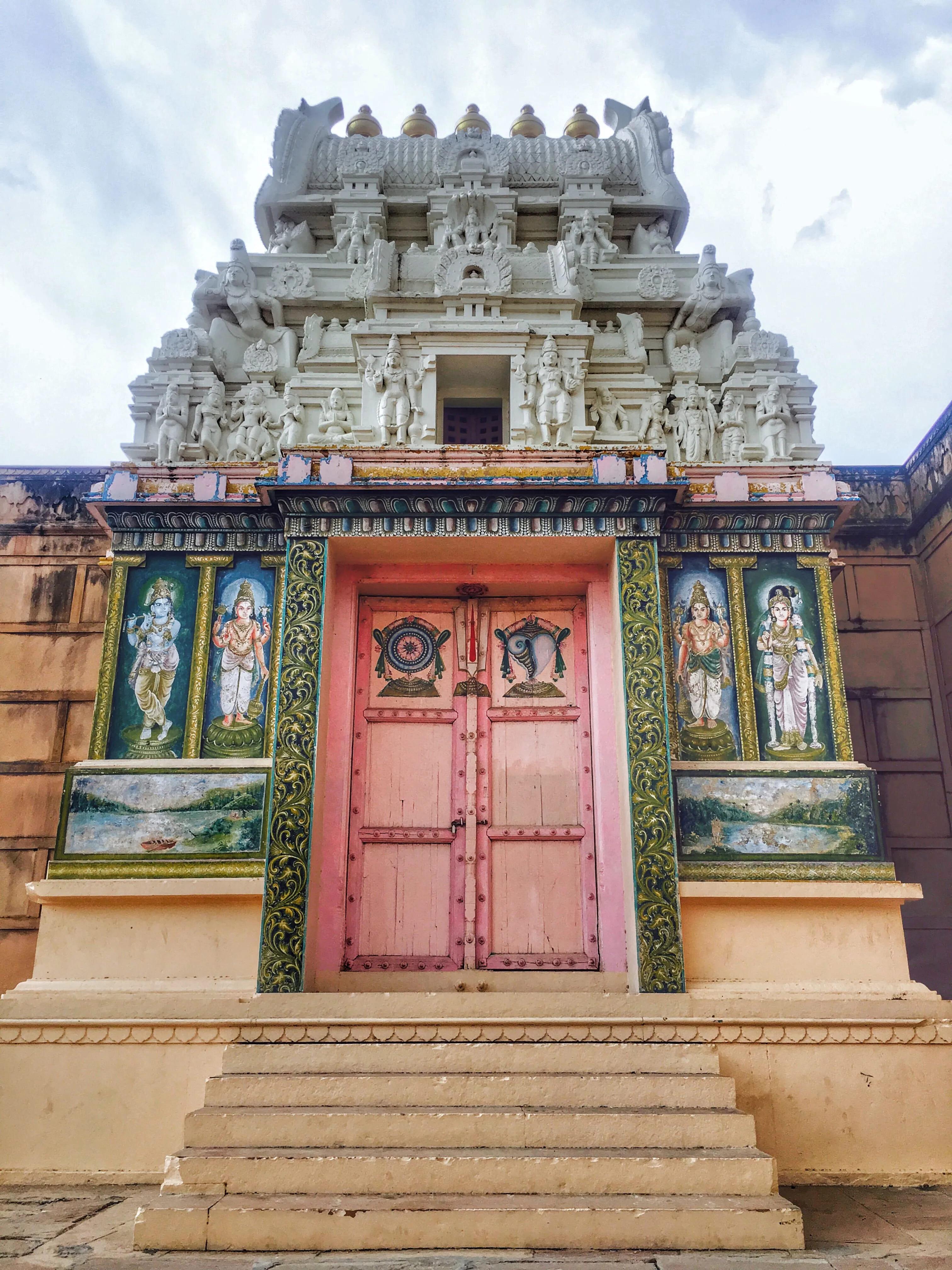
Devotees observe smaranam (give up sleep), shravanam (listen to divine discourses) and listen to namasankirtan, Vishnusahasranaam.
While elders observe the Ekadashi ritualistic fasting, children play the game of snakes and ladders. The snake signifies ego (if one puffs up with ego, that person will fall hard), while the ladder signifies bhakti.In south India, two treasures from the Bhakti era, the Tiruppavai and Tiruvempavai which are the creations of Vaishnavite saint Andal and Shaivite savant Manikkavachakar respectively, are both recited during this month. The Tiruppavai, comprising 30 verses and the Tiruvempavai, with 20 verses, is followed by a recital of Manikkavachakar’s Tirupalliezhucchi for the remaining 10 days.
The Shaiva sect observes the day as Trikoti Ekadashi, a religious observance where adherents regard it to be the date when all the deities in the Hindu pantheon pay obeisance to Shiva.
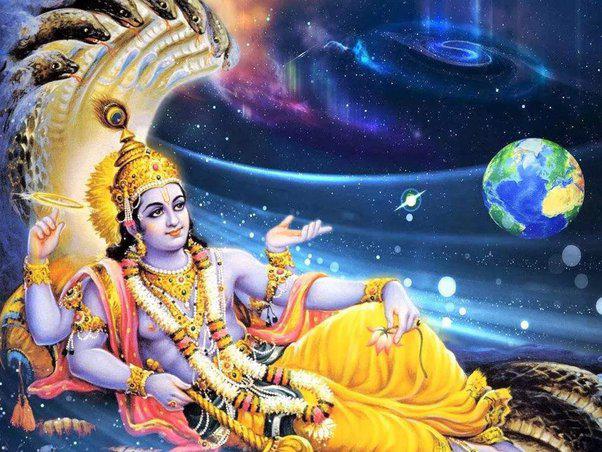
The human life is an opportunity to get free from all kinds of miseries by developing spiritual consciousness and surrendering at the feet of Lord Narayana to reach the eternal Vaikuntha.
Vaikuntah Purushah Praanah Praanadah Pranavah Prithuh
Hiranyagarbhah Shatrughno Vyaapto VaayurAdhokshajah!!
#heaven #vaikuntha #moksha #ekadashi
Comments (15)














